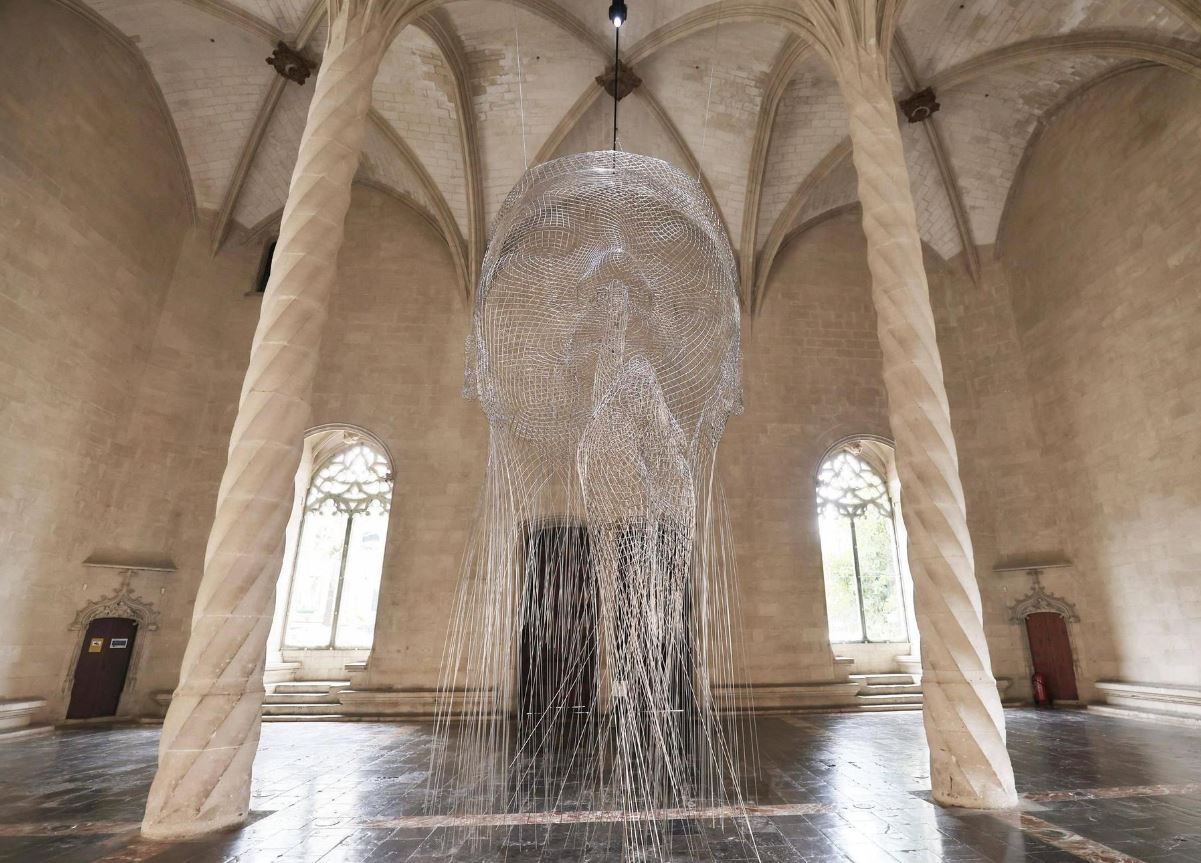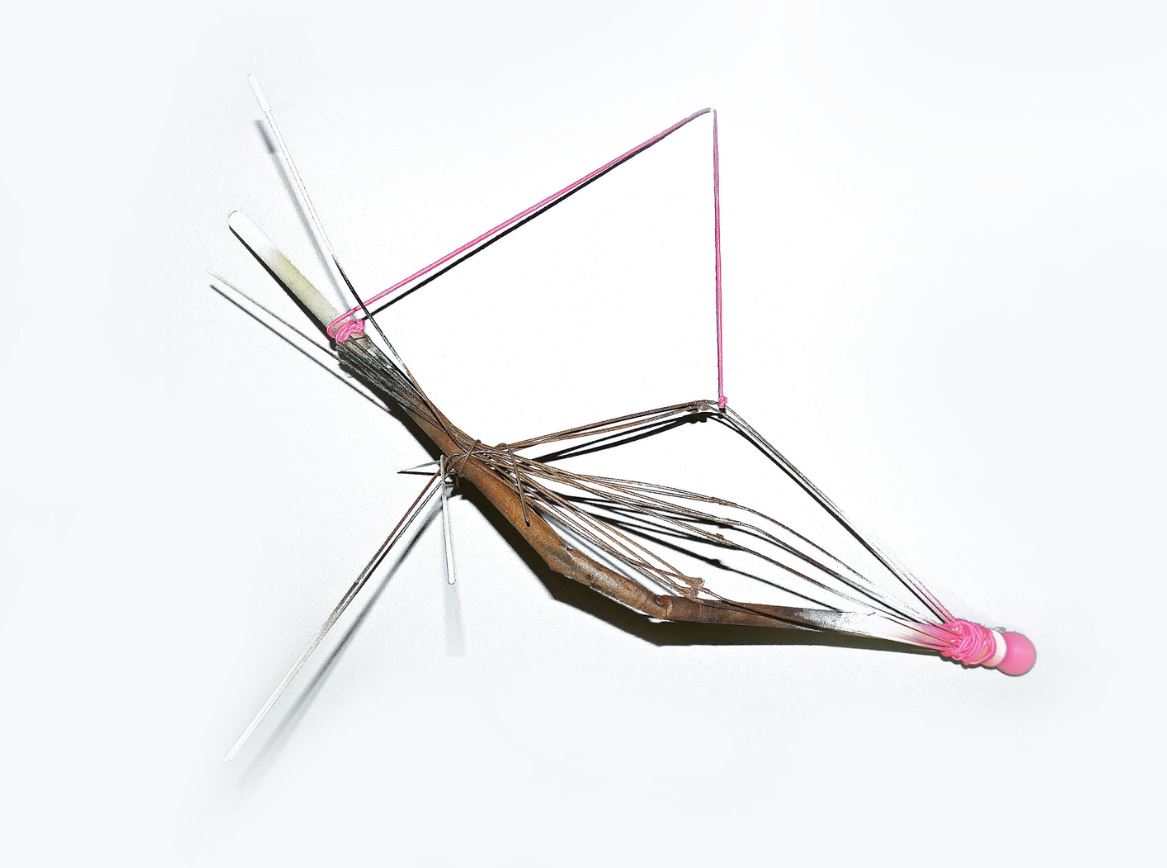interviews
Miguel Marcos: "In art, I'm interested in the conjunction between plastic and poetry, which is why Brossa's work attracted me strongly."
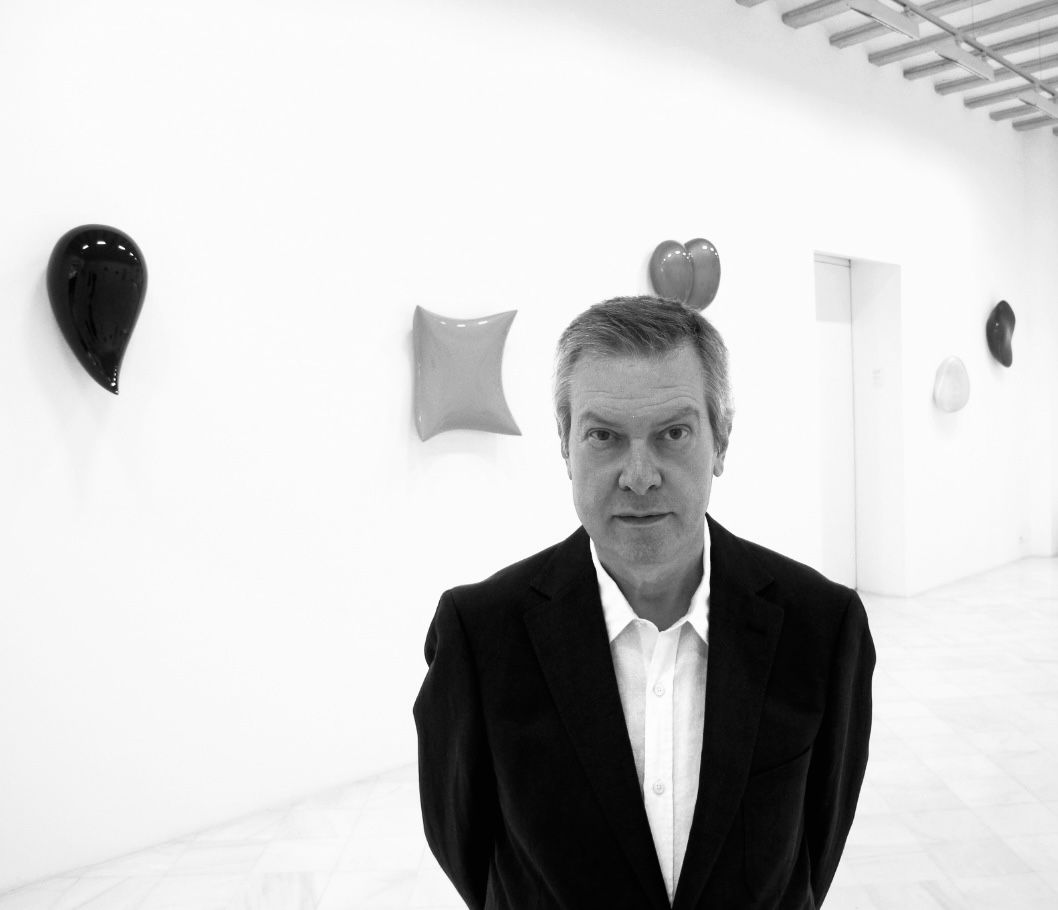
Miguel Marcos opened his first gallery in Zaragoza (1981), then in Madrid (1987) and later in Barcelona (1998). His indisputable career as a gallerist stands out for his commitment to the transmission and preservation of Joan Brossa's artistic legacy, his transversal and multidisciplinary work attracted Marcos for the poetics of a language that takes on a tangible form.
Through his gallery, he has organized exhibitions that have given visibility to the creations of Brossa, known for the conceptual art of his visual and scenic poetry. Thanks to this joint work, Marcos has played a key role in the dissemination of Brossa's work in the world of contemporary art, linking his work with international currents and thus consolidating its importance in various artistic disciplines.
Ricard Planas Camps. Since the mid-1990s, Joan Brossa's activity related to his plastic work has intensified: he carries out many of his Placement and architectural integration works, as well as exhibitions and participation in international events linked to the contemporary art Why do you think that was the case? What do you think was the turning point in the projection of your work?
Miguel Marcos. It coincides with the time when Brossa begins his relationship with the gallery. But this is not only to do with his work, but with the work of the gallery and its interest in exploring options that allow more visibility of the artists it represents. Throughout these years, we have managed to project his work to a wider audience and consolidate his position as a prominent figure in the international arena. Giving the artist the possibility to feel more secure helps to make him take on bigger projects. Since 1992 we have carried out exhibitions in the different headquarters of the gallery. When we decided to open in Barcelona, in 1998, we opened with 'BROSSSSA four locations'. The exhibition we had last autumn, 'Brossa. Art expanded', shows that this journey is far from over. The common thread of 'Expanded Art' is an immense mural created with the reviews and journalistic essays, compiled since 1992, which narrate the story of the link between the gallery and the poet through the media. The participation of his work in the most important fairs in the world through the gallery has been constant: Art Basel, ARCO, FIAC, Art Cologne, Art Chicago, Art Lisboa, CIGE in Beijing...
But also, we have carried out countless institutional collaborations to publicize his work. Among these, his intervention at the Spanish pavilion of the 47th Venice Biennale, in 1997, and at the Fridericianum Museum in Kassel, in 1998, in the context of Documenta 7. Retrospective exhibitions at the Städtische Galerie Göppingen, in Germany ; at the Konsthallen Gotteburg, Sweden; at the Cervantes Institute, in Paris; at the Carrillo Gil Museum and the Monterrey Museum of Contemporary Art, both in Mexico; at the Palau de Revillagigedo, in Gijón; at the Niemeyer Center, in Avilés; at the Cervantes Institutes in Beijing, Shanghai and Canton... and, more recently, at the CEART in Fuenlabrada, to celebrate the centenary of his birth, incorporating the various facets of Brossa's artistic activity, such as theatre, cinema, music or magic.
In the IVAM, in 1997, a large retrospective exhibition of his visual poetry and his artist books was presented, and a monograph of the graphic work rasonada was published. Relevant is the itinerant exhibition that was created in the Exhibition Hall of the Provincial Council of Huesca in 1992, which then toured Vitoria, Logronyo and Murcia. I mention it because it was the first tour of the Spanish territory that we programmed for his work and because the gallery is committed, not only to the usual circuits, but also to bring the work of contemporary art to all the regions of the country and audiences that may not have access to the main museums.
.JPG)
PRC However, Brossa would seem to be a creator at the antipodes of the Miguel Marcos Gallery's exhibition line. How does your work fit into the gallery project?
MM. Certainly, since 1981, when I started my project in Zaragoza and then opened headquarters in Madrid, in 1987, and in Barcelona, in 1988, painting has been my personal challenge. I opted for painters of my generation, the artists I have exhibited under the name 'The painted years'.
Juan Manuel Bonet defined it as "the fight for painting", especially at a time when conceptual art, performance and video art were hitting the artistic scene. But it is also true that I have always been interested in incorporating other debates into the plastic scene, seeing the work of art as "poetic" of the forms, the colors, the space itself.
Within this thirst for training and information that I have always had, at one time I read a lot of poetry: Antonin Artaud, Paul Eluard, André Breton, Boris Vian, the beatniks, who marked my generation, many of them with a work multidisciplinary In Brossa I first met him as a poet and, like all those I have mentioned before, he was and is primarily a poet. He himself said that he did not like to be called "artist", that folk artists were artists.
PRC How did the exclusivity between the Miguel Marcos Gallery and Joan Brossa come about?
MM. In art I'm interested in the conjunction between plastic and poetry, that's why his work attracted me strongly. Although many do not know it, in my youth, for a while, I made works that were in the world of visual poetry.
Specifically, that the gallery assumed the exclusivity of his work was the initiative of Brossa himself and Pepa Llopis. In 1996, they empowered lawyer and collector Mirentxu Corcoy to represent his work, in the broadest sense, and commercial management was handed over to the gallery.
PRC After three decades dedicated to disseminating the figure of Joan Brossa, do you think there are still outstanding aspects or specific areas that could receive more attention?
MM. We must bear in mind that Brossa's work is transversal and multidisciplinary; it approaches language and its forms of manifestation, through history and culture, from different registers, but always with universal content. This makes it always up-to-date and makes it possible to study it from many points of view, if we talk on the conceptual level. We cannot deny that there is still a way to go, there is always a figure of his size and the magnitude of his mark on the artistic scene.
PRC How do you perceive the personal impact of your work on the current artistic scene?
MM. Joan Brossa was and is an exceptional figure on the artistic scene, and his contribution to art is truly unique. Poet, dramatist and plastic artist, he is the most important Catalan avant-garde poet of the second half of the 20th century. As a gallerist, I have had the privilege of working closely with him and witnessing the depth of his creativity. His ability to fuse what is poetic with what is visual, what is playful with what is reflective, makes him a pioneer who has left his mark on contemporary art.
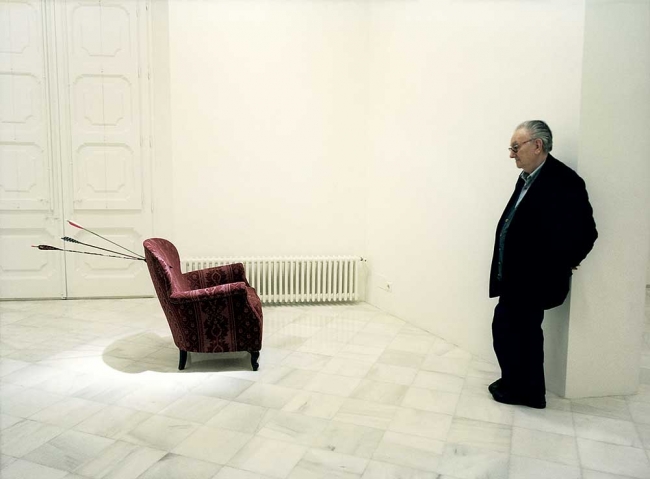 Joan Brossa a l'exposició inaugural de la Galeria Miguel Marcos (1998)
Joan Brossa a l'exposició inaugural de la Galeria Miguel Marcos (1998)
PRC Do you think that, in the area of the art market, we can talk about this same impact?
MM. If we talk about the art market, especially the Spanish one, the problem is not just Brossa's work. Spain has always had collecting and cultural institutions with ups and downs. Their dedication and appreciation for contemporary art is not comparable to that of other countries.
This does not help much to create a taste and awareness for art, especially if we consider that there have never been cultural policies defined by the State around the dissemination of art. And, even more, there have been no initiatives around the promotion, research and protection of Spanish art and artists. There is and has never been a clear strategy. And better not to talk about the promotion and projection of the artists abroad.
PRC What do you think has been the role of art criticism against a figure like Brossa?
MM. She has always been positive. Scholars such as Vicenç Altaió, Juan Manuel Bonet, Gloria Bordons, Fernando Castro Flórez, Victoria Combalia, Manuel Guerrero or Enrique Juncosa, to mention just a few, have carried out very valuable research and dissemination work, on the dimension and meaning of Brossa's work as a whole.
PRC Do you think that more action could have been taken in the public sphere to promote Brossa's work and the foundation that bears his name?
MM. It is true that in Spain the dynamic between the public and the private in art can be more complex and, at times, less cooperative than would be desired. Interaction between these spheres is sometimes constrained by a number of factors, including differences in focus, resources and agendas. The foundation deserves a separate reflection. Since 1999, his dedication, not only to the research and classification of Brossa's work, but also to its dissemination, is commendable. This has been increased since the arrival of Vicenç Altaió in the presidency. The foundation promotes activities related to the aforementioned purposes and undertakes essential actions to safeguard its artistic heritage. For this reason, we have never hesitated to collaborate with them or support them in their actions and vice versa.
PRC A work like that of Joan Brossa breaks the barrier with the viewer, the so-called fourth wall. Do you think that the usual exhibition spaces are suitable for this kind of work?
MM. I do not think that the debate arises by emphasizing the usual exhibition spaces. Art is not immutable. Over time, the spaces have adapted to large formats, to "dematerialized" art, to staging. In the case of the gallery, if there are limitations, we look for ways to solve them, which is why there are also our institutional collaborations, which often allow us to adopt more ambitious projects in terms of stage deployment and conceptual possibilities.
PRC On the other hand, do you think that the State and public entities are currently taking over the space for the dissemination and consolidation of Spanish art?
MM. In the 1980s, when I consolidated my activity as a gallerist, there was a period of heyday not only for Spanish art but for everything related to culture in Spain. The government, in those years, supported and stimulated initiatives, both public and private, which involved positioning Spanish art on an international scale. Spain was fashionable. We were an open storefront.
Large-scale exhibitions were held both in the country and abroad, the ARCO fair was created and the Reina Sofia Art Center, which later became a museum. All this was truncated in the early nineties. On the one hand, the Gulf War extremely affected the foreign and domestic market, and caused art buyers to become overly cautious. I do not think that neither the State nor the public institutions are assuming the space for the dissemination and consolidation of Spanish art. Everything depends on isolated proposals and the enthusiasm and stubbornness of people who still accept art as part of our lives.
PRC What does having a large private collection of Brossa's works mean to you and how do you think it contributes to the artist's legacy?
MM. Having this collection of works is an honor and a responsibility that I value deeply. This reflects the personal affinity I have developed with his work over the years and highlights my commitment to the preservation and transmission of his artistic legacy. The responsibility of being the custodian of this collection involves not only its physical conservation, but also the active promotion of its meaning and relevance in the contemporary artistic context. Having access to works that go from his first experiments to his latest creations, provides a complete view of his artistic development.
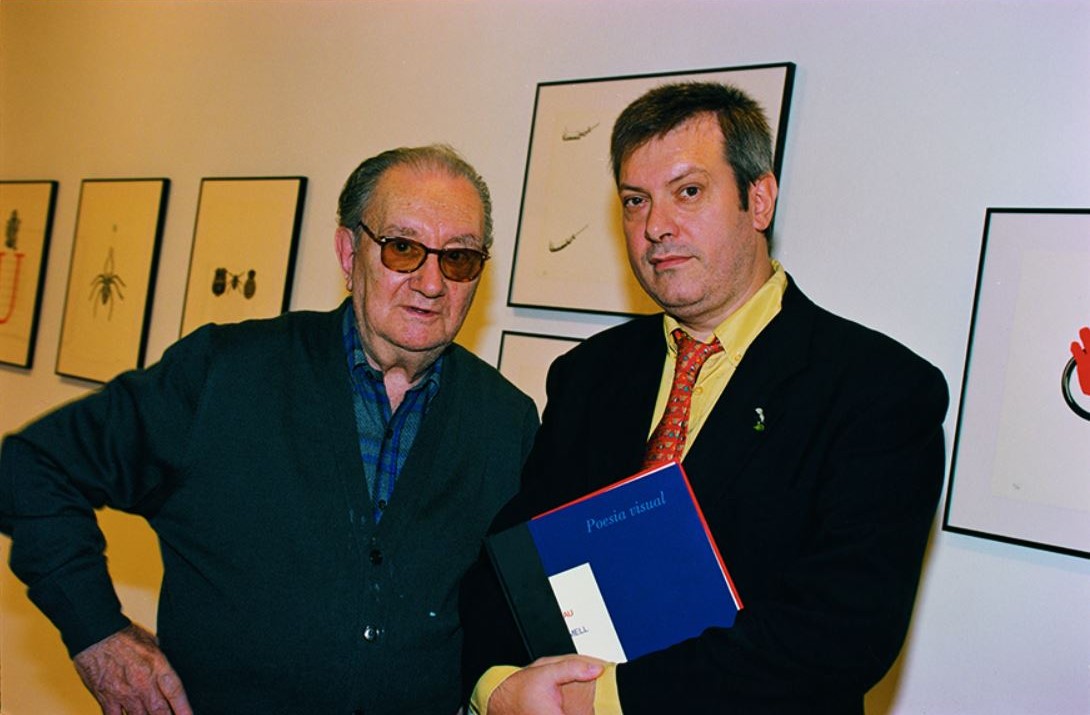

.png)



